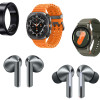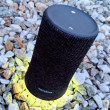The New Mile-High Club
Airbus and SITA have done tests similar to Boeing's using their OnAir picocell system to test interference on Airbus A320 and A340s. OnAir doesn't just offer internet access over Wi-Fi, but mobile phone service as well. They showed that by using picocells, neither Wi-Fi nor cellular radios interfere with avionics on the planes.
These tests, as well as the previous approval of Connexion, may pave the way for mobile phone relay systems like OnAir to make their way onto aircraft. There are a number of technologies competing for airlines' attention should they receive government approval.
OnAir, from Airbus and SITA, is capable of relaying mobile phone calls from GSM, CDMA or W-CDMA handset as well as internet access over Wi-Fi or Bluetooth. An airline can choose which of these options to install or activate. OnAir relays voice and internet through a satellite system - most likely Inmarsat's - to the ground. Airbus estimates the system could be available in commercial airliners in 2006.
Aircell's Broadband System relays mobile phone calls on GSM, CDMA and iDen as well as internet access over 802.11 b and g. Aircell's system communicates directly with towers on the ground, making it a likely candidate for use with the FCC's newly approved chunk of spectrum, which is reserved for air to ground transmission. Aircell expects the system to be ready in 2006.
AeroMobile, from ARINC and Telenor, is built just to relay GSM 1800 and 1900 calls as well as SMS and GPRS / EDGE packet data. Cellular transmissions are relayed from a picocell to the Inmarsat satellite networks. The system is expected to be available in late 2005.


 Galaxy Ring Joins Samsung's New Wearable Lineup
Galaxy Ring Joins Samsung's New Wearable Lineup
 Hands On with the New Moto Edge
Hands On with the New Moto Edge
 iOS 17 Brings Comprehensive Protection Against Unwanted Nude Images
iOS 17 Brings Comprehensive Protection Against Unwanted Nude Images
 Samsung Upgrades its Health App with Medical Records, Nutrition-by-Barcode
Samsung Upgrades its Health App with Medical Records, Nutrition-by-Barcode
 Club Quarters Hotels Support Digital Room Keys on any Smartphone
Club Quarters Hotels Support Digital Room Keys on any Smartphone



